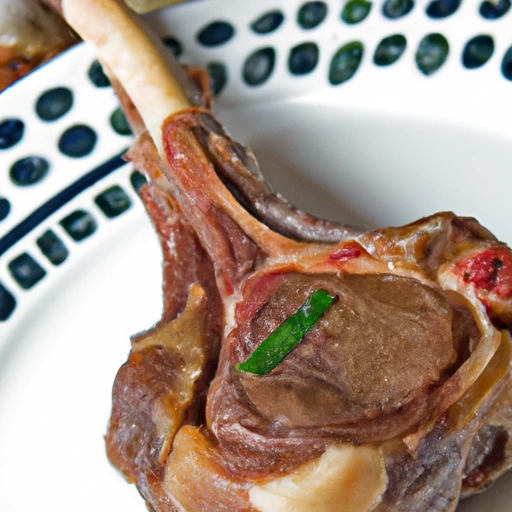Lamb Shank
Description

Lamb shank refers to a cut of meat from the lower section of the lamb's leg that includes the tibia, the leg bone beneath the knee. It is known for its rich, succulent flavor and tender texture that results from slow cooking. Lamb shanks are often sold individually, and they are a popular ingredient in a variety of dishes around the world due to their robust taste and the gelatinous quality they can bring to stews and braises.
Common uses
Lamb shanks are commonly used in slow-cooked dishes such as braises, stews, and soups. They are also popularly prepared by roasting or braising and are often featured in dishes alongside root vegetables and rich sauces.
Nutritional value
Calories
A typical lamb shank (about 200 grams or 7 ounces) contains approximately 400 calories.
Protein
The same serving size provides about 50 grams (roughly 1.76 ounces) of protein.
Fat
Lamb shank is moderately high in fat, with around 15-20 grams (about 0.5-0.7 ounces) per serving.
Carbohydrates
Lamb shanks contain a negligible amount of carbohydrates.
Vitamins
This meat cut is a good source of B vitamins, particularly vitamin B12.
Minerals
Lamb shanks are rich in minerals like zinc, iron, and selenium.
Health benefits
Lamb shank is rich in protein, which is essential for muscle repair and growth. The B vitamins in lamb shank play a key role in energy metabolism and the formation of red blood cells. The minerals found in lamb, such as iron, are crucial for oxygen transport in the blood and immune function.
Potential risks
As with many red meats, lamb shanks are high in saturated fat, which can be a concern for individuals with heart disease or those monitoring their cholesterol levels. It is important for such individuals to enjoy lamb shank in moderation and balance their diet with plenty of vegetables and whole grains.
Common recipes
Lamb shanks are a key ingredient in dishes like the slow-cooked Moroccan tagine, the Greek 'kleftiko', and the classic French 'navarin' of lamb.
Cooking methods
Popular cooking methods for lamb shanks include braising, slow roasting, and simmering in liquids such as broth, wine, or a marinade of herbs and spices.
Pairing with other ingredients
Lamb shank pairs well with hearty grains such as barley and rice, as well as with robust vegetables like carrots, potatoes, and onions. It is often accompanied by strong herbs like rosemary, thyme, and mint to enhance its rich flavor.
Summary
Lamb shank is a flavorful and nourishing ingredient that is versatile in its use in various culinary traditions. Its rich texture and taste make it ideal for slow-cooked dishes, offering a satisfying and comforting meal. When prepared and enjoyed responsibly, it can be a valuable part of a balanced diet.